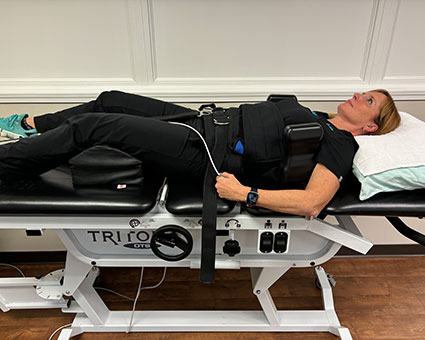How Spinal Decompression Can Alleviate Pressure on the Spine

Back pain disrupts daily life, limiting mobility and comfort. If you’re someone dealing with persistent backaches or stiffness, understanding spinal decompression might offer insights into one possible way to manage the strain on your spine. While everyone’s body is unique, and solutions vary, spinal decompression is an approach some individuals explore to alleviate pressure. Below, we outline what spinal decompression involves, its potential effects, and how it is designed to create relief through specific practices.
What is Spinal Decompression?
Spinal decompression actively reduces stress or compression in the spine. Over time, our spine endures significant strain from daily activities like sitting, standing, lifting, or twisting. Daily pressures may sometimes cause discomfort. Decompression gently reduces tension in the vertebrae and surrounding tissues in a controlled and gradual way.
This approach involves either non-invasive techniques, such as mechanical traction or targeted stretching, or surgical methods that are specifically recommended for more severe conditions. It’s key to note that non-surgical techniques are often conducted in therapeutic settings. Understanding these options helps individuals choose the most effective method.
How Does it Work?
Decompression creates space, reduces stress, and introduces a sense of relaxation to compressed areas of the back. This process typically promotes better alignment and allows the spine to stretch slightly to ease tension. While results differ from individual to individual, these mechanical processes are designed with the intent of creating a soothing experience.
Here are some key aspects of non-surgical spinal decompression:
- A supportive, controlled position is often utilized to gently stretch the spine.
- Stretching the spine discs can be reduced, which may help to alleviate tightness.
- This stretching approach also encourages blood flow and oxygenation within the tissues.
- It may help relieve nerve compression, potentially reducing pain and improving mobility.
What are The Benefits of Decompression?
Although results vary based on a person’s specific needs, decompression can be beneficial for general spinal care and improved comfort. Some individuals explore it as part of their efforts to better manage physical discomfort in their everyday lives. It is often used alongside other therapies to enhance overall spinal health. By understanding its benefits, individuals determine whether decompression is a suitable addition.
Key areas where decompression may contribute include:
- Reduced Pressure: Lightly stretching the spine can release tension in compressed areas.
- Better Mobility: Therapeutic decompression techniques may make everyday physical movements feel smoother and more natural.
- Relaxation: The targeted stretch creates a calming sensation for many individuals.
- Supportive for Recovery Plans: Decompression techniques pair well with an overall strengthening exercise routine.
- Enhances Circulation: Increasing blood flow to the spine helps deliver essential nutrients and oxygen for healing.
- Ease Stiffness: Gentle stretching helps loosen tight muscles and joints.
Is it Right for You?
Whether you’re experiencing back discomfort intermittently or regularly, spinal decompression can feel like a supportive resource to look into. You should assess your circumstances before trying any new technique. Speaking with a healthcare provider beforehand helps your chosen approach align with your specific spine health goals. If you’re looking into decompression techniques as a method to alleviate spinal pressure, speak with a professional who can provide detailed insights based on your needs.





